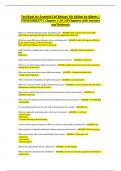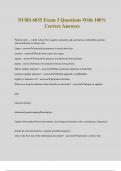Summary
A level Edexcel Business A Star Summary for theme 1
- Course
- Institution
Comprehensive A-Level Edexcel Business Notes: Master the intricacies of business studies with these meticulously crafted A-level Edexcel Business Notes. Designed to provide a deep understanding of essential concepts, these notes cover various topics, from business operations and marketing strategie...
[Show more]












